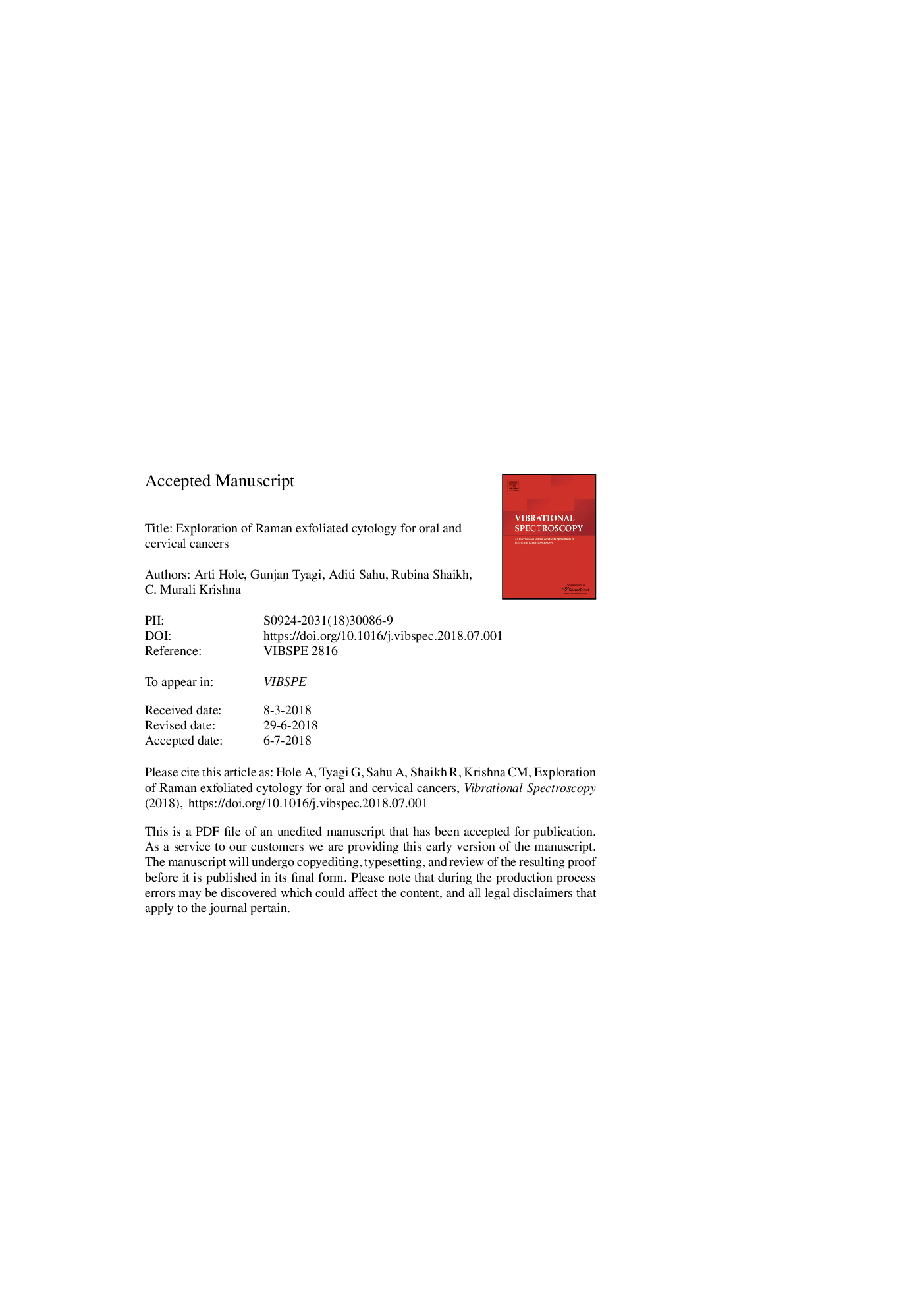| Article ID | Journal | Published Year | Pages | File Type |
|---|---|---|---|---|
| 7690508 | Vibrational Spectroscopy | 2018 | 22 Pages |
Abstract
Exfoliated cell are one of the most patient compliant specimens, hence are workhorse of successful screening programs in cancers like cervix. Raman exfoliative cytology (REC), even on cell pellets using Raman microprobe, has demonstrated â¼80% specificity, comparable to conventional screening programs. Objective of this study is to further evaluate Raman spectroscopy, which is sensitive to biochemical composition, vis-a-vis conventional morphology based cytology that differentiates cell-type but not the origin. Exploration of this kind further corroborates utility and efficacy of REC as screening tool, also can pave way to prospective multi-cancer screening by a multi-group model. Therefore, the present study explores REC in a stringent two-cancer, four-group model for classification of 44 oral [29, tumor (OT), 15 normal (ON)] and 66 cervical (38 tumor (CT), 28 normal (CN)] exfoliated cell specimens. Spectra were acquired from cell pellets using Raman microprobe. Spectra were analyzed in two approaches, spectra-wise and subject-wise to circumvent inherent heterogeneity due to co-localization of normal cells in malignant specimens. In the first approach, PCA and LDA yielded a classification efficiency of 82% for OT and 77% for CT. A slightly higher classification (OT, 86% and CT, 84%) was achieved for the subject-wise approach. Thus findings of this study demonstrate similar efficacy and specificity to that of individual cancer-based models reported earlier. These findings are quite encouraging especially for resource deprived and under privileged countries where these two cancers are more prevalent and could be useful for prospective centralized REC facility.
Keywords
Related Topics
Physical Sciences and Engineering
Chemistry
Analytical Chemistry
Authors
Arti Hole, Gunjan Tyagi, Aditi Sahu, Rubina Shaikh, C. Murali Krishna,
